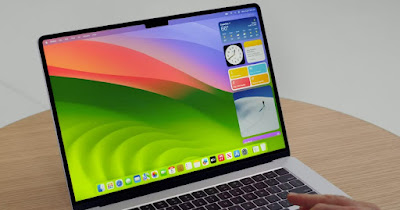Guide to install the MacOS system from scratch and cleanly on Mac from USB drive
 We all know that Macs are sturdy and hardly bear the brunt of time, remaining fast even after many years of constant use.
We all know that Macs are sturdy and hardly bear the brunt of time, remaining fast even after many years of constant use.However, anyone who wants to completely renew their Mac to bring it back to the same original performance or to resell it without leaving personal traces can perform a clean install of macOSwith the same elegance and ease that distinguishes every Apple branded product!
READ ALSO -> Create the USB stick to install MacOS from Windows
1) Preventive backup
A clean install will erase everything on the drive on your Mac or MacBook, so make sure you have a backup copy of important files, photos and documents, before proceeding.
We can also save the most important photos and documents online (without using sticks, hard drives or shared network resources), using the iCloud service (included in all Apple products) as storage space, but also Google Drive or other cloud systems, such as those seen in our guide Comparison of free Cloud Drives to save files online.
To carry out a preventive backup we connect a 1TB USB external hard drive on the Mac, press on the Apple symbol at the top left, press on System settingswe open the menu General and finally we press on Time Machine.
Let’s now press on Add backup diskindicate the connected USB disk and then finally press on Run backups in order to have a backup copy of our system. Once the backup is finished, we disconnect the disk and continue reading the guide, so that we can proceed with the clean installation of macOS.
2) Download Mac installation file
To download the installation file for the Mac we will have to recover the image file of the latest version of the operating system directly from the App Store. So let’s open the App Store and search macOS Sonoma in the search bar at the top left (the latest currently supported version).
Let’s press on Get and wait for the system image to download, which may take a while. As soon as the download is finished we can start the clean installation directly from Mac Recovery, which we can access as shown in the following chapters.
Alternatively we can use the program Disk Creator to create a clean install disk for other Macs to restore.
3) Start clean install
After downloading the right file from the store to do the clean installation of macOS we must use Mac Recovery and the procedure changes based on the Mac model you own. On the Mac, let’s take us along the path Apple -> About this Mac and in the window that appears we see what type of Mac we are using:
- on a Mac with an Apple chip we will see a labeled item Chipfollowed by the chip name;
- on a Mac with an Intel processor we will see the term instead Processorfollowed by the name of the Intel processor.
Once the type of Mac available has been identified, the procedure for restoring the clean image changes.
macOS Recovery on a Mac with an Apple chip
On a Mac with an Apple chip we turn off the system completely and hold down the power button on the Mac until the system volume and button appear Options. Now just click on the button Optionspress on Continuesselect the volume to recover, then click Avanti; to finish we select an administrator account and press on Avanti.
After entering the password we can do a clean installation of the Mac by pressing on Reinstall macOS [Nome]by pressing up Continues and following the instructions that will appear on the screen. When asked to select a disk, make sure to select the current macOS disk (in many cases it is the only one available).
macOS Recovery on an Intel-based Mac
After turning off the Mac we press the keys Command-R to immediately start the recovery mode compatible with the Mac in use.
The procedure is now identical to that seen on Macs with Apple chips: in the screen Recoverylet’s click Reinstall macOS [Nome] and follow the on-screen instructions to return your Mac to its original settings.
Conclusions
The procedure described is valid on any Mac or MacBook for install MacOS cleanly. Since Mac Recovery already includes the procedure for restoring it, we can also use it in the event of a blocked Mac or if we have to sell the Mac.
Alternatively, we can always create a Mac installation USB stick (as seen in the recommended links) and restore a blocked Mac system by connecting the stick and following the procedure already seen in Mac Recovery, choosing the USB stick as soon as it is shown in the recovery screen.
For further information we can read the guide above how to install macOS from scratch on your Mac from a USB stick.
